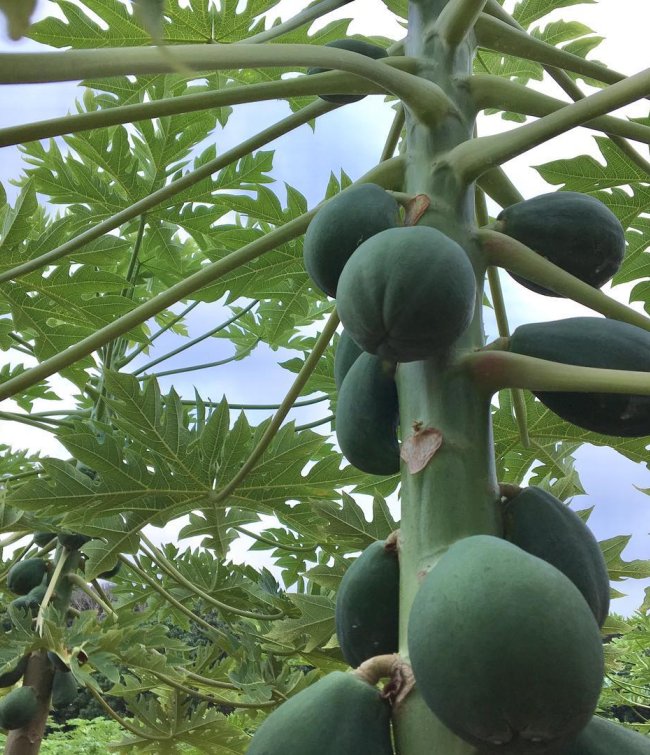ONLY FACTS
WE HAVE THE FACTS ON GMO
The papaya has been around for centuries. Thought to have originated in Mexico or Central America, the soft-fleshed fruit made it’s way to Europe, Southeast Asia and India. Thanks to its hardy seeds, papaya spread easily throughout the tropics, and has become naturalized in many tropical and subtropical regions, especially those with abundant water and fertile soils. The well-traveled papaya picked up different monikers during its journey around the globe: “Pawpaw” in Europe, “Fruta Bomba” in Cuba and “Papaye” in France.
When Captain Cook discovered Hawaii in 1778, he purportedly presented papaya seeds from Central America to an influential warrior who would later rule the Islands of Hawaii as Kamehameha the Great. The yellow-fleshed fruit quickly became “the fruit of royalty” and has been grown in back yards and commercial farms across the Islands ever since.
Today, Hawaii is the largest producer of papaya in the United States.
Hawaii papaya industry is a key contributor to the state’s economy and has had a profound impact on local agriculture and on the livelihood of its people. But this successful industry came close to collapse in 1992 when the Papaya ringspot virus (PRSV) infected papaya crops in Puna on Hawaii Island, the heart of papaya production. Within a few years, the virus had devastated the industry, which saw papaya production plummet by 50%.
Fortunately, scientists from Cornell University and the University of Hawaii had been studying PRSV since 1979 and discovered a way to use the genetic portion of the virus to inoculate papayas against the disease.
Known as the cross-protection method, researchers identified and cloned the gene that produces the coat protein in the virus and then inserted the gene into the papaya. The gene makes the plant resistant to PRSV, just as the flu shot makes people resistant to the flu.
In 1998, transgenic papaya seeds were made available to growers and adoption was rapid. The timing couldn’t have been better for the industry, which by then was on the brink of collapse. Within the first year of adoption, 98% of Hawaii Island growers had registered to receive the Rainbow papaya seed, and 73% were soon growing the virus-resistant fruit. By the second year, 56% of the island’s fruit-bearing acreage was transgenic. The availability of genetically engineered papaya brought struggling growers back into the papaya business and by 2001, production in the region had rebounded to 40 million pounds per year.
Biotechnology not only saved Hawaii papaya industry, it also gave papaya growers a second chance. Today, transgenic papaya represents nearly 80% of Hawaii’s papaya industry, which generates $14 million in sales each year. Genetically improved papaya varieties include Rainbow and SunUp papaya.
-The Hawaii Papaya Industry Association



